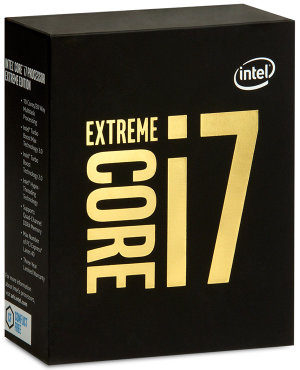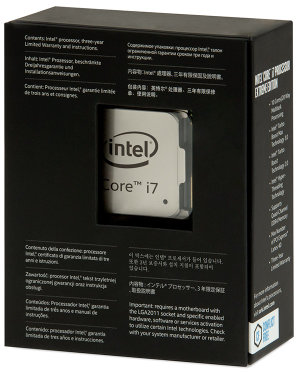Broadwell-E: Intel Core i7-6950X, 6900K, 6850K & 6800K Review
Is Broadwell more attractive to enthusiasts without graphics and up to 10 Hyper-Threaded cores? We test against two previous generations, plus Skylake to find out.
Intel Broadwell-E Conclusion
Nobody is going to argue that Intel’s processors are the fastest available. The company has several enthusiast-oriented CPUs that we’d want in a high-end PC built for gaming, productivity or even mega-tasking, the cringey buzzword used to describe multiple threaded workloads running concurrently. Intel’s clearly the prettiest girl in the room, is well aware of this fact and, based on Broadwell-E's pricing, doesn't need to beat the "value" of last generation's -Es by much.
Consequently, it’s hard to get excited about today’s launch. For anyone who bought Haswell-E, you’ll find a refreshed replacement at each familiar tier, plus a $1700+ halo model. Swapping old for new, you'll pick up a little extra performance attributable to the architecture and a bit more from subtle frequency boosts. Nothing’s going to make you want to upgrade a Core i7-5930K with a -6850K, though.
| Intel's Enthusiast Desktop CPU Pricing (As of 5/30/2016) | |
|---|---|
| Core i7-6950X (Broadwell-E) | $1723 (1K Quantities) |
| Core i7-6900K (Broadwell-E) | $1089 (1K Quantities) |
| Core i7-5960X (Haswell-E) | $1016 (Newegg) |
| Core i7-6850K (Broadwell-E) | $617 (1K Quantities) |
| Core i7-5930K (Haswell-E) | $580 (Newegg) |
| Core i7-6800K (Broadwell-E) | $434 (1K Quantities) |
| Core i7-5820K (Haswell-E) | $390 (Newegg) |
| Core i7-6700K (Skylake) | $350 (Newegg) |
| Core i7-4790K (Haswell) | $340 (Newegg) |
Unless you have a very specific reason for needing a 10-core CPU, that Core i7-6950X is a real kick in the pants. We have no doubt those needs exist; after all, several of our benchmarks demonstrated excellent scaling all the way through 10 cores, and saving time on compute-intensive work adds up to big money. However, we would have loved to see the -6950X replace the -5960X at $1000 and so on down the stack, giving enthusiasts a reason to step up. That might not have looked good next to the Xeon E5-2687 v4, which commands a $2141 price tag for 12 cores and 30MB of L3 cache at 3GHz. But the E5 is dual-socket-capable, while the Core i7 is limited to 1S platforms. They don’t exactly compete.
At the other end of the spectrum, Core i7-6800K seems like a solid option for gamers looking to build on X99 as affordably as possible, particularly if you only intend to run one or two graphics cards. Given Core i7-6700K’s more advanced architecture, higher clock rate, lower price and more flexible Z170 PCH, the quad-core route is a more cost-effective solution. But we did see a couple of situations where modern titles do benefit from six, eight or ten cores. Stay tuned for a more in-depth piece that focuses on gaming and how the latest titles respond to a range of host processors.


Intel does show signs that it’s still thinking about enthusiasts. Turbo Boost Max Technology 3.0 is a novel approach to throwing your best core at single-threaded workloads sensitive to clock rate. Per-core overclocking facilitates increased granularity in how you dial in optimal performance. AVX ratio offsets ensure you can maintain an aggressive overclock and then dial back clock rate in applications written to exploit Intel’s power-hungry Advanced Vector Instructions without compromising stability. And VccU voltage control offers access to the coherent ring interconnect’s power supply—something Intel says is really aimed at extreme tuners. It’s only unfortunate that our overclocking and power analysis doesn’t show a lot of headroom available to folks with air or closed-loop liquid cooling systems. Even if you’re the owner of a beefy water cooler, there’s only so much to squeeze out of Broadwell-E...and usually that’s less than Haswell-E.
According to Intel, you should be able to find all four Broadwell-E-based models for sale immediately. So, from this point on, anyone already in the market for a high-end desktop will likely spend a few more dollars to get Broadwell-E instead of buying the Haswell equivalent. However, we don’t expect Intel’s minor improvements to compel many upgrades on existing X99 platforms. There’s simply not enough new going on. Instead, we imagine those dollars going toward the latest 14/16nm GPUs and PCIe-based storage.
MORE: Best CPUs
MORE: All CPU Content
MORE: Intel & AMD Processor Hierarchy
Get Tom's Hardware's best news and in-depth reviews, straight to your inbox.
Chris Angelini is Editor Emeritus at Tom's Hardware. Follow him on Twitter and Google+.
Igor Wallossek is a Senior Contributing Editor for Tom's Hardware Germany, covering CPUs and Graphics.
Current page: Intel Broadwell-E Conclusion
Prev Page Intel Core i7-6950X: Overclocking, Power & Temperatures-
jt AJ was expecting a bit more info and review usage of turbo 3.0. also looks like most of broadwell E chip is junk.. except that one 6850k chip you received probably lucky 1.25v for 4.4v would be good thats only because its broadwell. got one here for 4.8ghz at just 1.22v.Reply -
Nuckles_56 Chris, how likely is it that a noctua NH-D15 would be able to cool these heat producing monsters if your h100i struggled and failed with the i7-6800k @4.4GHz.Reply
But a truly excellent review, even if it does show that there is little reason to go to broadwell-E over Haswell-E -
elho_cid I'd love to step up to the realm of higher core count, but given the results of Adobe SW when scaling to many threads, meas it is not really useful right now. :/Reply
That's a pity, because the most time I spend staring at a progress bar is when I'm using Adobe products. I don't really need more power to "background tasks" like zipping or lame encoding.
-
AdmiralDonut Standard SLI is not limited on the new NVIDIA cards. The only thing that's limited is the new High Bandwidth SLI. Normal 3 and 4-way SLI can be enabled easily by simply asking NVIDIA for an unlock code, something any half way serious enthusiast will most certainly do. Here's some more info on this matter:Reply
https://www.youtube.com/watch?v=2wBDt9tN5-c -
bit_user I don't really see the point of having a $1700 non-Xeon SKU. Of the few people who can afford it, even less would bother/dare to overclock it.Reply
I'm still wishing for the rumored 5 GHz SKU to surface. I've rarely needed more than 4 cores, but a couple extra GHz always comes in handy. Even so, I'll not be upgrading until at least Skylake-E or perhaps Kaby-E.
-
Cerunnir ReplyChris, how likely is it that a noctua NH-D15 would be able to cool these heat producing monsters if your h100i struggled and failed with the i7-6800k @4.4GHz.
But a truly excellent review, even if it does show that there is little reason to go to broadwell-E over Haswell-E
NH-D15 is arguably better or atleast equal to the H100i when it comes to cooling, and its noise levels is definatly lower both in load and while idle.
http://www.relaxedtech.com/reviews/noctua/nh-d15-versus-closed-loop-liquid-coolers/2 -
bit_user Reply
No. Buy a Xeon version, for that. It's practically the only difference. It's artificial product differentiation, known as "market segmentation".18045773 said:Does it have support for ECC ram?
Here, you can find links to the specs of the CPUs mentioned in this article: http://ark.intel.com/products/family/79318/Intel-High-End-Desktop-Processors#@Desktop If you view their individual specs, you can see that none support ECC.
Intel hasn't yet announced the E5-16xx v4 series CPUs, but you can turn up leaked specs with a bit of searching.
And you'll need motherboard support, too.
-
cats_Paw Good review (excellent if its only the heads up for a more in-depth one).Reply
I have to say that I would love to have a 6 or even 8 core CPU but these prices and performances dont add up.
In my country a 6700K and a 5820K are priced almost the same, but its still a hard choice (Do i want a "maybe" future proof 6 core that can be good for some work or a 4 core that is flat out faster and cheaper to build around for gaming?). -
pyoverdin Am I correct in saying I could build a PC that's 5 FPS off the 6950X for it's price?Reply
